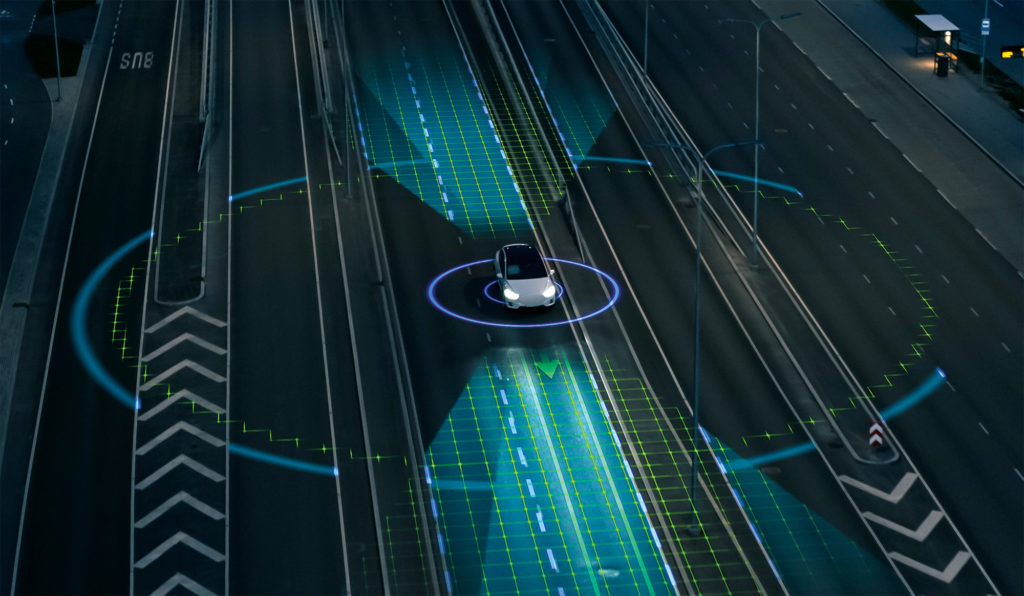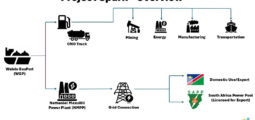Long Road to Autonomy: Will Self-Driving Cars Rule the Road?
Isn’t owning a car all about freedom and individuality? A surprising number of people seem more drawn by convenience and safety factors.

Consider a future where commuting is stress-free, traffic accidents are virtually a thing of the past, and mobility is available to all.
This is the promise of self-driving cars, the breakthrough technology that promises to transform the world of personal transport. Autonomous vehicles can theoretically improve safety and cut traffic congestion — but will they ever dominate the road?
With the technology comes (as always) legal challenge, infrastructure requirements, and the need to sway public opinion.
In the Driving Seat
Self-driving technology has made significant progress in recent years. The Society of Automotive Engineers (SAE) has established six levels of automation, from zero (or Level 0: no automation) to Level 5.
Currently, most commercially available “auto-automobiles” feature advanced driver assistance systems (ADAS) that fall into Levels 1 and 2. This includes adaptive cruise control and “lane-keeping assist”. But several businesses are testing cars with Level 3 and 4 automation, which can handle the majority of driving responsibilities.
Waymo, Cruise and Tesla are at the forefront of this revolution. California-based Waymo has started a completely autonomous ride-hailing service in a few US cities, while Cruise is testing self-driving cars on challenging metropolitan streets. Tesla’s mass-market EVs are becoming more automated, too, with “Autopilot” and “Full Self-Driving” modes.
Despite these advances, major challenges persist. Self-driving cars use a complex network of sensors to interpret their environment, including cameras, radar, and lidar. These must be capable of accurately detecting and interpreting objects in a range of environments, including rain, snow, and fog.
The AI systems “behind the wheel” must be capable of making split-second decisions in complicated and unpredictable scenarios. Developers continue to prioritise safety and dependability.
Regulatory and Legal Landscape
While tech fuels development, widespread adoption will depend on legislative and legal decisions. Countries and regions take different steps to regulation, resulting in a patchwork of rules and criteria. Self-driving cars may use public roads for testing and restricted deployment in some areas, but not in others.
Creating unambiguous liability frameworks is the Big One. Who is responsible in the event of an accident involving a self-driving car: the manufacturer, the software developer, or the vehicle’s owner? Addressing these concerns is critical for safe, widespread adoption.
Insurance standards must be updated, too; traditional structures may not be appropriate — liability for accidents may transfer from the driver to the vehicle. To meet such specific issues, new insurance products and pricing methods will be needed.
Public acceptance and safety concerns have a tremendous impact on the regulatory landscape. Governments and authorising bodies must strike a balance between promoting innovation and maintaining the safety. Clear norms and standards are required to boost public confidence and ensure a seamless transition to a self-driving future.
Technology Requirements
The effective integration of self-driving cars into our daily lives is dependent on the accompanying infrastructure and technology. To operate securely and efficiently, autonomous vehicles require a powerful, interconnected network.
High-definition maps, significantly more detailed than current GPS systems, are required, and must include precise information on road markings, lane configurations, traffic signs, and speed limits. Creating, updating and maintaining these comprehensive maps on a worldwide basis is a challenge.
Advanced communication networks are needed so that self-driving cars can communicate with other vehicles, traffic infrastructure, and cloud-based applications. Vehicle-to-vehicle (V2V) and vehicle-to-infrastructure (V2I) communication allow for real-time data transmission. These developments should improve safety and traffic flow. The deployment of 5G networks, as well as the development of dedicated short-range communication technologies, will help seamless communication.
Intelligent traffic management systems are another critical component. These optimise traffic flow and alleviate congestion by combining data from numerous sources, such as linked automobiles and traffic sensors. They can increase efficiency by co-ordinating the routes of self-driving vehicles.
Numerous technological challenges remain. Sensor technology must advance if it is to provide reliable perception under all settings. AI systems must become more sophisticated to handle unpredictable road conditions and make safe decisions — in real time.
Cybersecurity is another issue; self-driving cars can be hacked with malware. Ensuring the integrity of their systems is critical for safety.
Public Perception
Acceptability in the public eye remains a critical variable. Surveys have revealed conflicting sentiments; some are enthusiastic about the benefits, others concerned about safety, job displacement, and the personal freedom of conventional transport.
Although self-driving cars have the potential to reduce accidents, questions remain regarding their capacity to handle unforeseen events. Building trust in the technology — and demonstrating its safety record —will be obligatory in mitigating these worries.
And what of the other perceived advantages? Many people foresee increased convenience, mobility for the elderly and disabled, and less traffic congestion. But fears about job displacement in the transport industry remain. Truck- and taxi drivers, as well as other professions that rely on driving, may face the same job-loss challenges that AI has brought to other fields.
Addressing these issues will be crucial to ensuring a fair and equitable transition, but ultimately, public acceptance and adoption will be determined by a variety of criteria.
Self-driving cars are a reality, and becoming more common on our roads. As their benefits become clearer, public perception is likely to shift, opening the way for widespread adoption.
Expert Opinions
Predicting an exact timescale for the transition is tricky. Experts provide a range of projections; some, fuelled by industry optimism, predict that completely autonomous vehicles will rule our roads within 10 years. Others warn of the myriad hurdles that remain: regulatory barriers, infrastructure construction, public acceptance, and the requirement for comprehensive testing and validation. Many believe it will be several decades before self-driving cars become the norm.
Several factors may expedite things. Breakthroughs in AI and sensor technologies could cover safety and reliability fears. Supportive regulatory regimes and infrastructure development may help. The increasing demand for ride-hailing services, as well as the potential for cost reductions, may promote commercial adoption.
Public scepticism, and the need to handle potential job displacement, may take the self-driven foot off the accelerator. Whatever the case, it seems that self-driving cars will be an unavoidable part of our future. As technology advances and society adjusts to a new paradigm, expect to see more autonomous vehicles on a road near — or under — you.
Tesla’s Pioneering Path
No discussion about self-driving cars would be complete without addressing Tesla.
The EV manufacturer, led by Elon Musk, has been a disruptive force in the automobile industry from the word Go. It is now pushing the limits of what is possible in autonomous technology.
Tesla’s Autopilot system, a package of enhanced driver-assistance capabilities, has been widely accepted by its users — and provides a glimpse of what a self-driving world would be like.
The company’s more ambitious Full Self-Driving (FSD) capability, still in experimental testing, aspires for greater autonomy. Tesla’s tech relies primarily on cameras and neural networks; some of its rivals use lidar and radar.
While contentious, all these techniques have the potential to cut the cost and increase the accessibility of self-driving technology.
Tesla’s audacious vision and rapid development of self-driving features has prompted enthusiasm — and criticism. Some praise Musk and his company for ingenuity, and contribution to the industry; others express fears about safety and technological readiness.
Regardless of one’s standpoint, Tesla’s contribution to the field cannot be denied. Its progress will be keenly monitored by both admirers and detractors.
You may have an interest in also reading…
Mackenzie Scott: Giving Wealth Away
Mackenzie Scott, the third-richest woman in the world, last year started giving her wealth away. “There are lots of resources
Grand Old Party: Wacky Is the New Normal
In contemporary US politics, reality is whatever the eye of the beholder wishes to ignore. Though the art and science
Building the Bridge Between Non-financial and Mandatory Reporting
BP CEO Bernard Looney’s courageous announcement that BP will transition to becoming a green energy pioneer shows the need for



















































































